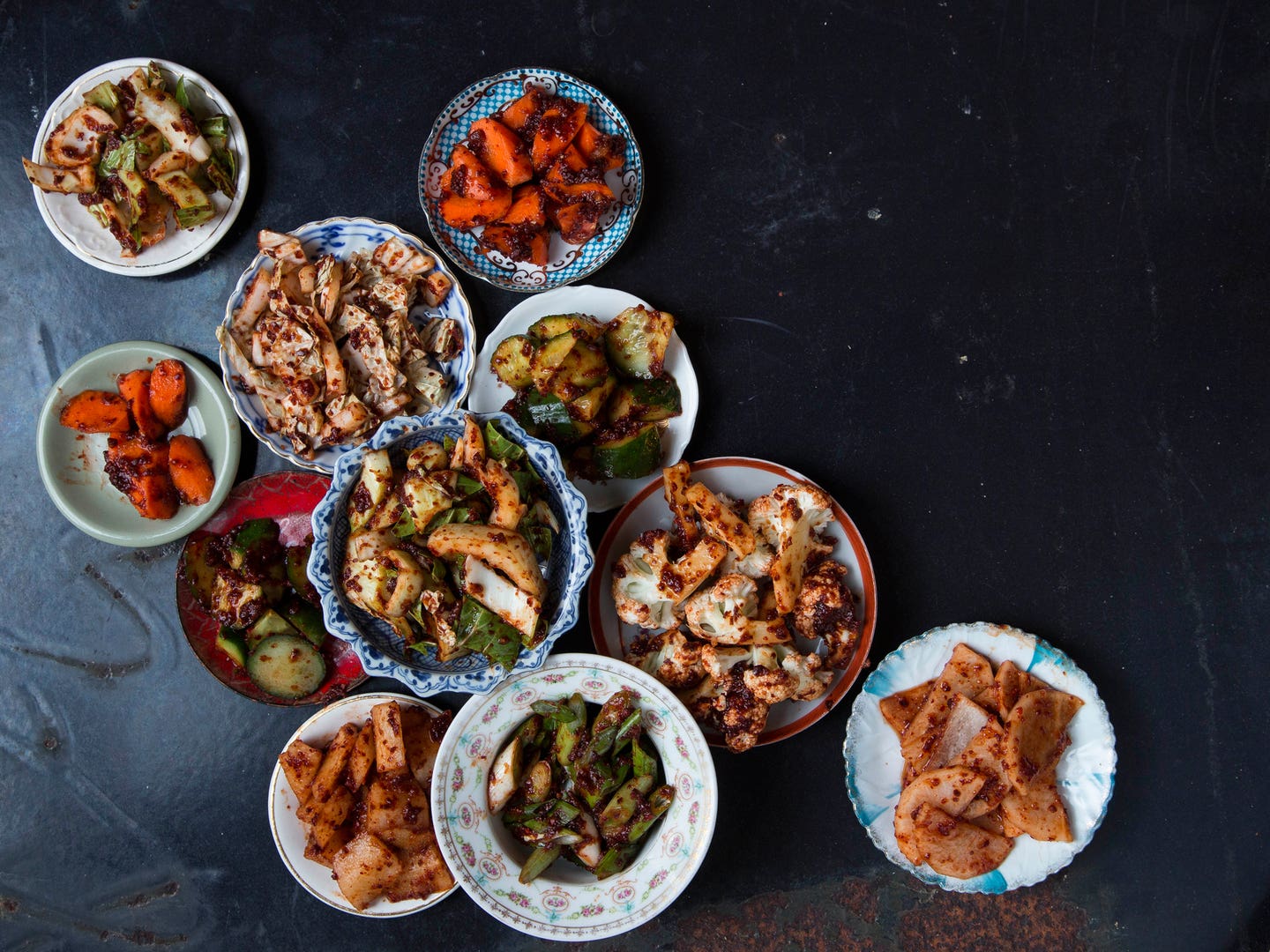
When it comes to fermentation, we're just a touch obsessed. If there's something that can be fermented (hint: everything), we think it should be. It may sound intimidating (and there are risks involved, to be sure), but it doesn't have to be a challenge. Executive editor Stacy Adimando would go so far as to say that "the art of fermenting vegetables is as simple as soaking them in salt and water, or...rubbing them in salt so they form a natural brine." Get some spices involved to kick your brining up a notch. Once you get your base down, get ready for plenty of soups, dips, and sauces to take your ribs to the next level. Check out our 10 favorite fermentation recipes below.
Chia seeds! Lacto-fermented brine! It sounds like hippie food, but these seed crackers are addictive.
Chia seeds! Lacto-fermented brine! It sounds like hippie food, but these seed crackers are addictive. Get the recipe for Seed Crackers with Lacto-Fermented Brine »
This squash will be ready after two weeks in brine. Get the recipe for Base Brine for Fermented Vegetables »
Fermented Carrot Borscht with Ginger and Turmeric
“Borscht was traditionally a fermented soup,” says Cortney Burns, who adapted the classic beet base to one featuring a combination of fresh and fermented carrots and beets instead. “The warming spices, fresh ginger, and alliums bring out the natural sweet flavor of the carrots,” she says. Burns tops her soup with anything from salt-brined caraway to shredded or wilted vegetables, pickled ginger, dill, or yogurt, but play around with combinations you like. For a red version, use purple or red carrots and red beets. For a yellow version, use yellow carrots and golden beets. Pass the finished soup through a fine-mesh sieve for a completely silky texture. Get the recipe for Fermented Carrot Borscht with Ginger and Turmeric »
"Borscht was traditionally a fermented soup," says Cortney Burns, who adapted the classic beet base to one featuring a combination of fresh and fermented carrots and beets instead. Get the recipe for Fermented Carrot Borscht with Ginger and Turmeric »
Short Ribs with Fermented Pepper Harissa
Tangy fermented pepper paste, the base of Burns’ harissa, can be customized to be as sweet or spicy as you prefer. “Mine is usually in the middle,” she says. The sauce can be used immediately, but Burns says the leftovers will continue to improve in taste for up to 6 months and keep indefinitely in the refrigerator. Slow-cooking the short ribs at the oven’s lowest temperature, or in a low-heat dehydrator, ensures that the centers stay medium-rare. And a quick sear on a grill or grill pan delivers crispy edges. Get the recipe for Short Ribs with Fermented Pepper Harissa »
Tangy fermented pepper paste, the base of Burns' harissa, can be customized to be as sweet or spicy as you prefer. Get the recipe for Short Ribs with Fermented Pepper Harissa »
Tangy, tender lime pickles are a flavorful staple of India, a condiment that adds sour, spicy punch to meals. Get the recipe for Indian Lime Pickles »
This berry-infused syrup made with vinegar adds a balancing zing to all kinds of drinks, most famously the Roffignac, a sweet-tart cocktail named for New Orleans' last French mayor. Allowing it to ferment (as opposed to cooking it on the stovetop and using it immediately) makes it even tangier. Get the recipe for Fermented Raspberry Shrub »
At the Glade Hill Cannery in Franklin County, Virginia, master canner Ronald David helps his neighbors process local heritage apples—like tart, vinous Staymans—into dense, jammy apple butter (see "A Living Larder"). Get the recipe for Apple Butter with Cinnamon and Cloves »
The recipe for this lacto-fermented mixed pickle is flexible: Use whatever vegetables happen to inspire you at the market, and feel free to tweak the seasonings. The benefit of using baby vegetables is not only aesthetic; because of their small size, they cure faster. Also because of their small size, and their sweet, mild flavor, we don't want to use too much salt in the brine: As a safeguard, we add just a bit of white wine vinegar. Get the recipe for Mixed Baby Vegetable Pickles »
This recipe was adapted from True Brews: How to Craft Fermented Cider, Beer, Wine, Sake, Soda, Mead, Kefir, and Kombucha at Home by Emma Christensen. Sterilize every spoon, jug, bucket, cap, or bowl you use when home brewing to avoid contamination. Get the recipe for Spiced Hard Apple Cider »
Getting tired of your plain winter root vegetables? Throw some homemade kimchi on there to spice up a standard dish. Get the recipe for Quick Basic Kimchi »
Keep Reading
Continue to Next Story










